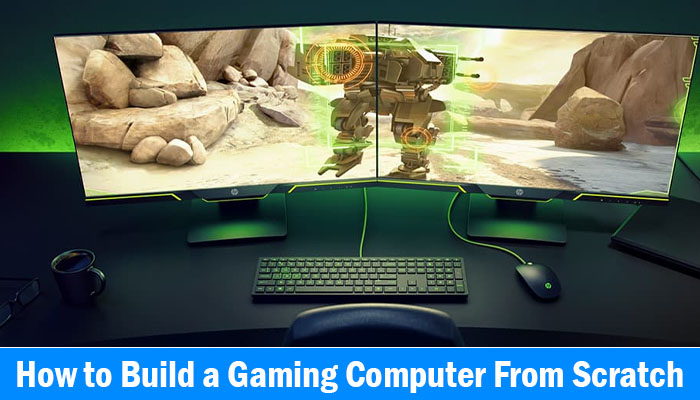How to Build a Gaming Computer From Scratch
The first step in building a gaming PC is choosing your parts. You’ll need an internal HDD or SSD and an external hard drive. The most common PC builds use a combination of the two. You don’t need to have a ton of storage, as you can always add an external hard drive or additional internal HDD. You also need to have a good understanding of hundreds of different tech specs. How to Build a Gaming Computer From Scratch
The most important parts of a gaming computer are the CPU and video card. You’ll want to spend a decent chunk of your budget on these components. Once you’ve decided on the graphics card, you’ll need to base the rest of your parts list around it. Getting the best video card and CPU is essential and should be prioritized by your budget. Make sure to get one with a large enough memory capacity to handle the demanding games.
Next, you’ll need a graphics card and RAM. While the GPU is the most important component, it’s not the only one. It’s also important to balance your build to avoid any performance bottlenecks. If you’re unsure about what components are necessary, you can always go for a cheaper, older version. Both types of storage are great for gaming. Although the HDD is the preferred choice, SSDs are an excellent alternative if you’re on a budget.
If you’re a gamer, then you’ll want a gaming computer with ultra-sharp graphics. Generally, you’ll need at least 8GB of RAM, but many gamers recommend 16GB. Remember that a lot of gamers prefer to play on high-end machines, so it’s important to have plenty of RAM and a powerful processor. You can read more about these components in our articles, or you can choose the components based on what you’re budget will allow.
The next step in building a gaming computer is choosing your components. While most components come with instructions, some of the more complex parts may be difficult to install. A motherboard, for example, is the core of your computer. This is the component that powers the entire system. It provides the necessary power for your games. Afterward, you should add a solid-state drive. Finally, you’ll need a solid-state hard drive to store your files. Then, you can buy your graphics card and RAM.
If you’re building a gaming PC, you need to know how to install the motherboard. The motherboard is the main component of a gaming PC and can be a bit intimidating, but it’s easy to figure out with the help of a manual. Then, you’ll need to seat the CPU and power supply in their respective slots. The last step in building a gaming computer is to connect your monitor to the motherboard.
When building a gaming PC, there are several components that will make the process easier. For example, the motherboard needs to be installed before you can install the rest of the components. The CPU is the most expensive component, so you should consider upgrading to a better model. You should also consider the RAM and storage. There are numerous advantages and disadvantages to each. The CPU is a key component in the game, and it’s vital that it is the right size for the games you’re playing.
The motherboard is the heart of a gaming computer. It helps you play games and keeps the machine running at the highest possible speeds. The processor is the most important component, but it’s also an important one. A computer without enough memory or processing power will not be able to function properly. Then, you’ll need to choose the components that best suit your needs. Once you’ve chosen the motherboard, you should install the other components.
Besides the CPU, there are other components that are crucial to the game. The power supply is a box inside the case that provides power to the computer. It’s an important component, as it ensures the proper functioning of the components. When you have the right power supply, your gaming PC will be more stable and faster. It will be easier to complete a game. In addition to the CPU, you should also choose a power supply.
